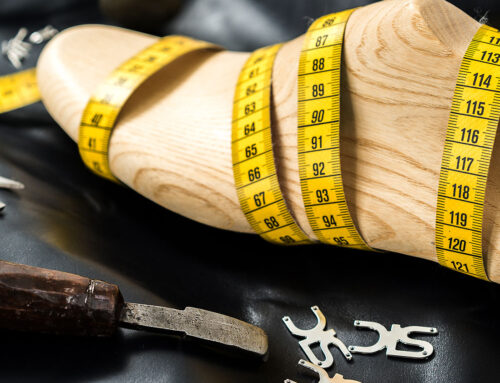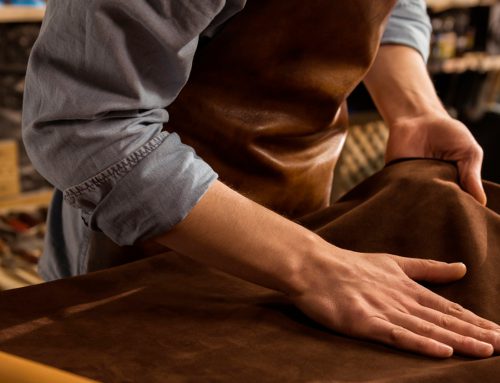We are based in Italy, we handcraft custom shoes and despite all our business keeps on going ahead – “agile” – as usual. Do you know why? Because our agile company is a digital-native one and since day one our mission has been to digitize the shoe production, from design to delivery.

How did we do it?
We have created a digital platform in which all our stakeholders (b2c customers, b2b customers, craftsmen, suppliers, couriers, payment systems, customs authorities) are perfectly integrated. They can access the information needed and thus contribute to make the process of creating each custom shoe smooth, quick and easy.
The platform is completely custom, developed in Drupal and in the cloud on AmazonAws.

Our b2c customers can order comfortably from home through our website www.dis.shoes. They can create their personalized shoes thanks to our photorealistic 3D Configurator. Imagination becomes reality by being able to create a shoe from over 50 million combinations, choosing the model, leather, sole, laces, eyelet, lining, adding initials. In their reserved area they can check which production phase their order is in (thanks to the tracking of the different production phases with our craftsmen), view the shipping tracking and download the order invoice thanks to FattureinCloud.
Our b2b customers (32 retailers worldwide) can offer an innovative in-store experience thanks to our Totem Touch Screen with NFC technology: they can design and purchase custom shoes for their customers with just a few clicks (watch the video here). In order to speed up the sale process, the Totem only shoes the shoe models that are displayed inside the store (we have over 100 footwear models in the catalog) and the site navigation is in local language and currency.

The platform allows to set a custom price list, view sale performance stats for each shop (in the case of a chain), track production progress and shipping status of each order and process payments by credit card thanks to Stripe.
Our craftsmen access their private area every morning and download all new orders from Drupal Commerce and from our stores. Each order has a unique SKU which is translated into a separate production base. At the same time, the main sub-suppliers receive orders (eg: leather and soles), supplying our craftsmen with the needed quantities every day.
Each mouse click turns into a handcrafting step (cutting, hemming, assembly, demoulding, finishing, quality control, shipment) and the craftsman updates the system with a click, informing customers in real time.
When the order is ready to be shipped, all information is passed on through a few clicks to our DHL courier, together with digital customs documentation in PLT (paperless trade) mode. Finally, the customer’s shoe gets collected and delivered to his home.

How long does it take to get this all done? Only in 10 working days, since we allow everyone to gather the needed information in a smart and agile way. Last but not least, by producing only what we has been ordered we save 30% of CO2 emissions.
What is the role of DIS? We direct the system, we monitor the entire flow with a few clicks, always working according to the lean and agile organization principles: even before the conorona virus outbreak, we worked remotely at least 1 day per week, thanks to the Gsuite Google.

Thanks to Trello, all the processes are mapped into “boards” and transformed into activities called “cards”. Each board has its owner (manager) and cards are assigned to a team member and have an expiration date. The cards contain all the information to be able to complete the task and it is possible to attach files and create shared documents thanks to Google Drive. The activities are divided into advancement steps: to organize, backlog, to do, doing, done, accepted. The work is organized by the owner every week through a weekly meeting lasting up to 30 minutes, in which all the team members involved can connect through Meet video conferencing system. The owner has the task of: making sure the activity is complete (moving the card in the “done” step), correct (moving it on the “accepted” step) or not (moving it back on the “to do” step); the owner should also check why the cards in “doing” are not yet in “done” (does it take more than a week to complete or have there been blocking activities that can be solved by other team members?); the owner organizes the “to do” for the following week, rearranges the backlog based on the new corporate priorities and replace the cards in “organize” in the appropriate stage together with the team.

The whole team can organize meetings by consulting the shared agenda on Google Calendar and collaborate remotely with the Slack messaging system without having to clog the corporate Gmail mailing accounts.
Do you understand why we managed to fight the corona virus? Because thanks to digital tools and agile approach everyone of us can work remotely, having all the information needed to complete their work.
All this is possible only thanks to people. We believe in the exchange of knowledge and in the great value of relationships.






